WATCH: LNER's first brand-new Azuma train reaches Edinburgh
The first of the new fleet to travel between the Scottish capital and King's Cross in London will provide around 100 more seats per train and extra legroom.
This is also expected to increase the number of cheaper fares available.
Advertisement
Hide AdAdvertisement
Hide AdThey will initially take over one service a day in each direction on the route.
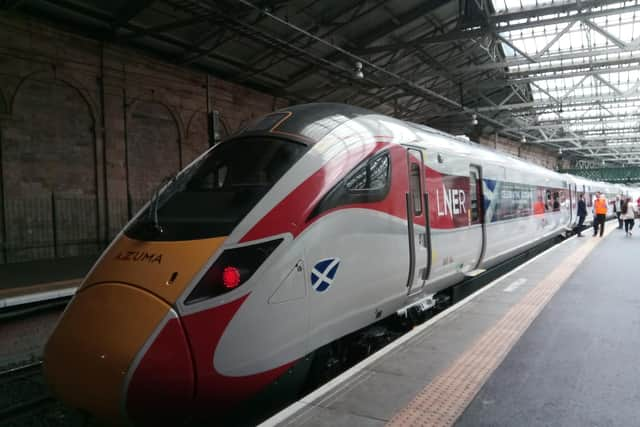

The 0540 Flying Scotsman from Edinburgh to London will be the first, increasing to eight between the cities by the end of September, UK Government-run LNER said today.
Its sole daily London-Glasgow Central return service will be operated by an Azuma from 23 September, followed by those on its Aberdeen and Inverness routes around two months later.
For the first time, the same type of trains will be able to run on all these lines because Azumas can run using diesel as well as electric power.
This will enable them to continue on no-electrified tracks north of Edinburgh to Dundee and Aberdeen, and north of Dunblane to Perth, Dundee and Inverness.
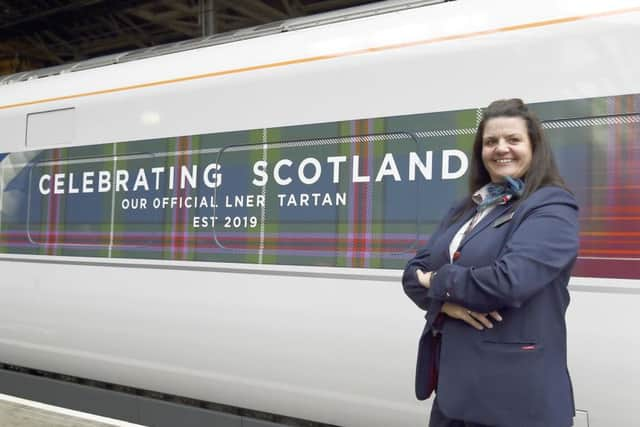

An Azuma will also operate the weekday 1730 King’s Cross-Edinburgh service from tomorrow.
On Saturdays, the 0655 from Edinburgh and 1230 from London will feature the Hitachi-built Japanese trains.
They will also operate the 0900 from Edinburgh and 1430 from London on Sundays.
Advertisement
Hide AdAdvertisement
Hide AdBACKGROUND: Azuma trains to reach Edinburgh in August All 65 trains in the fleet are due to be in service by May or June next year, most built in County Durham.
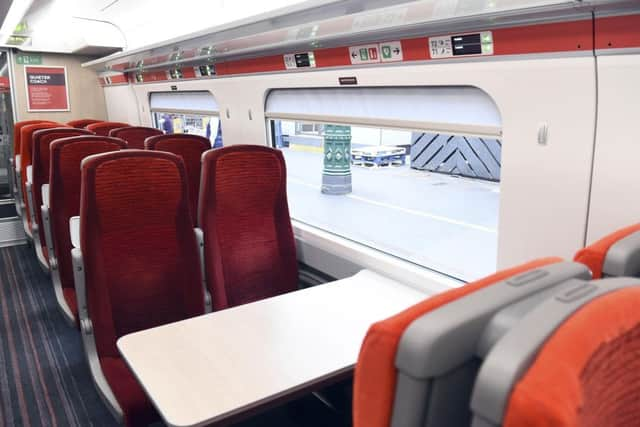

From December, extra services will be added to provide trains between Edinburgh and London every half hour.
Then in December 2021, trains at two-hourly intervals will be speeded up by some 20 minutes to take around four hours - a similar time taken by the Flying Scotsman, which stops only in Newcastle. However, LNER engineering director John Doughty said that was dependent on track upgrades by Network Rail.
The first Azumas started running in May between London and Leeds, replacing electric trains that have been in service since the east coast main line was electrified 28 years ago.
They were first introduced five months late due to problems such as their compatibility with signalling equipment.
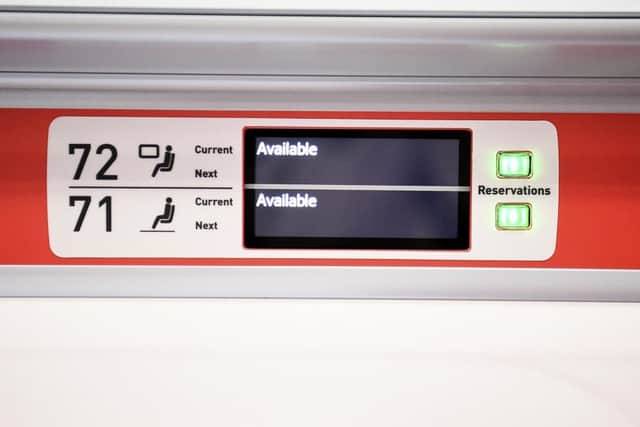

The trains are capable of 140mph but will be limited by the line's 125mph speed limit.
The fastest stretches of lines north and west of Edinburgh are 100mph, but most sections are slower.
On the Aberdeen and Inverness routes, the Azumas will replace diesel InterCity High Speed Trains which have been running for nearly 40 years.
Advertisement
Hide AdAdvertisement
Hide AdLNER managing director David Horne said it still hope to win half the rail/air market between Edinburgh and London - of which it currently has about one third.
He said: “There is a lot more awareness about the sustainability of trains vs planes.
“We have seen significant growth in international travellers to Edinburgh.”
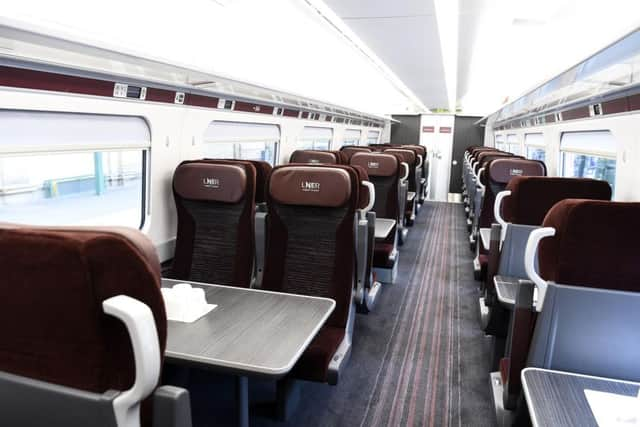

Passengers were impressed by the train on a preview run between Edinburgh and Berwick-upon-Tweed today, but said staff must ensure everything worked.
John Mayhew, director of the Association for the Protection of Rural Scotland, said: “Hopefully, the new trains will be more reliable, which should improve punctuality.
“But spending hundreds of millions on new rolling stock will be wasted if staff don’t clean the toilets regularly and ensure a working water supply in every toilet on every train every day.
“The seats felt firmer than the old ones, but that doesn’t bother me as I quite like a firm seat - the test will be whether they are comfortable for four to five hours.
“The electronic reservation system [red or green lights above seats] will be great as long as it actually works - sadly my experience is that they frequently don’t.”
Advertisement
Hide AdAdvertisement
Hide AdRail author Dr Ann Glen said: “The accommodation is superior to what is on offer on the current trains and I particularly noticed there is more legroom - that was quite discernible.”
Scottish Conservatives transport spokesman Jamie Greene said: “The launch of the new Azuma service is a welcome development which will deliver modern and more sustainable travel between the Scottish and English capitals.
“Whilst the launch of these new carriages has suffered the same late-delivery issues as many other new services, they promise to be a much welcome addition to cross-Border connectivity.”
However, sustainable transport campaigners Transform Scotland called for the trains to run further under electric power in Scotland.
Rail spokesman Paul Tetlaw said: “We’re confident Azuma will make a critical contribution to driving the switch from air to rail for Anglo-Scottish travel.
“It is essential transport emissions are reduced if we are to meet our climate change targets.
“Unfortunately, while the trains will operate in electric mode south of Edinburgh, it will be quite different for those heading north to Aberdeen and Inverness.
“Here, the trains will operate largely in diesel mode.
“It’s now time for the Scottish Government to bring our railways north of the Central Belt up to 21st century standards.
Advertisement
Hide AdAdvertisement
Hide Ad“Billions of pounds are being spent on dualling roads, yet no similar investment is planned for the railways.”
A spokesman for the Scottish Government’s Transport Scotland agency said: “Electrification of Scotland’s railway network is a key component of our commitment to improving rail services and tackling climate change.
“We remain committed to a rolling programme of electrification and are working with Network Rail to identify the next Scottish electrification scheme.”